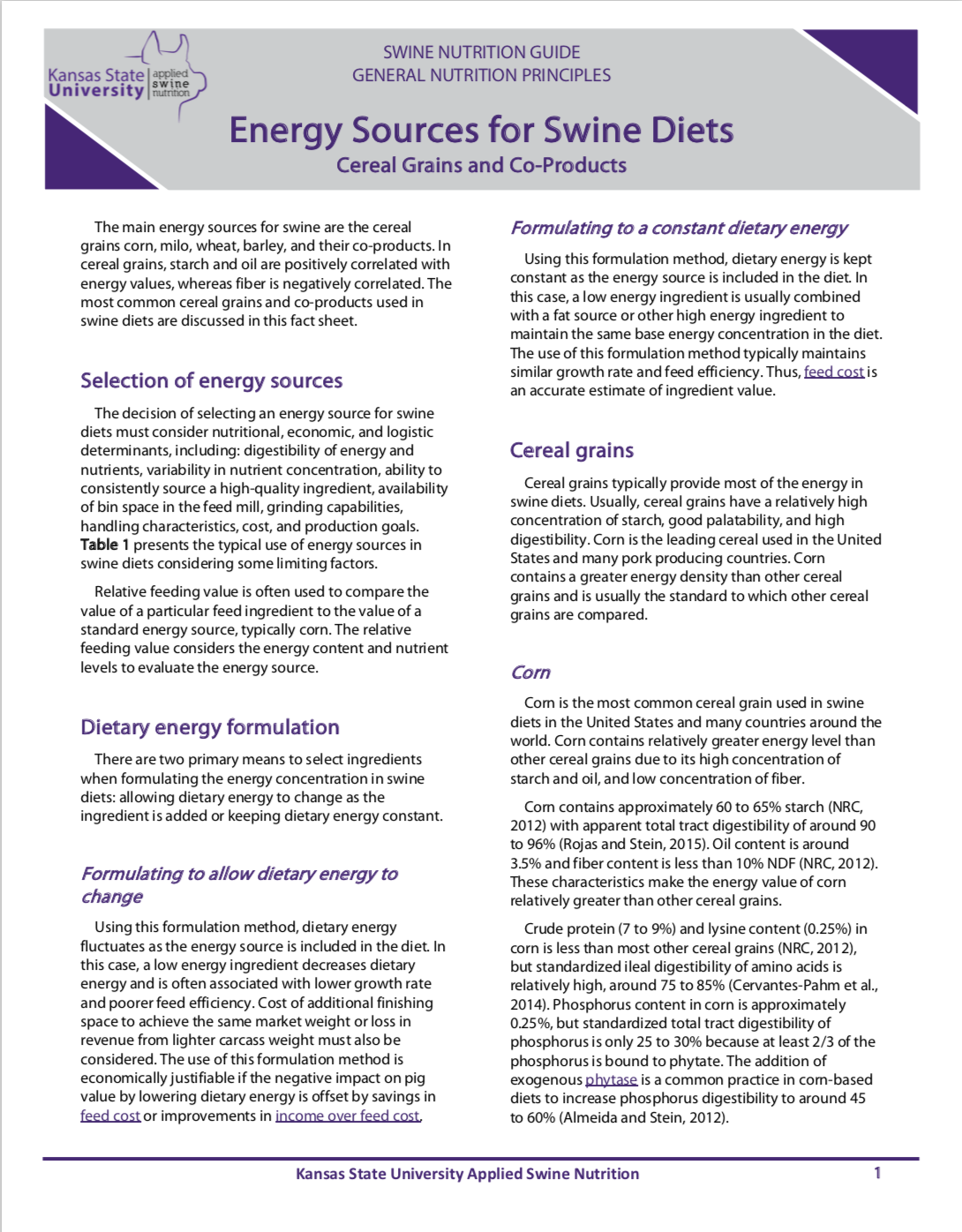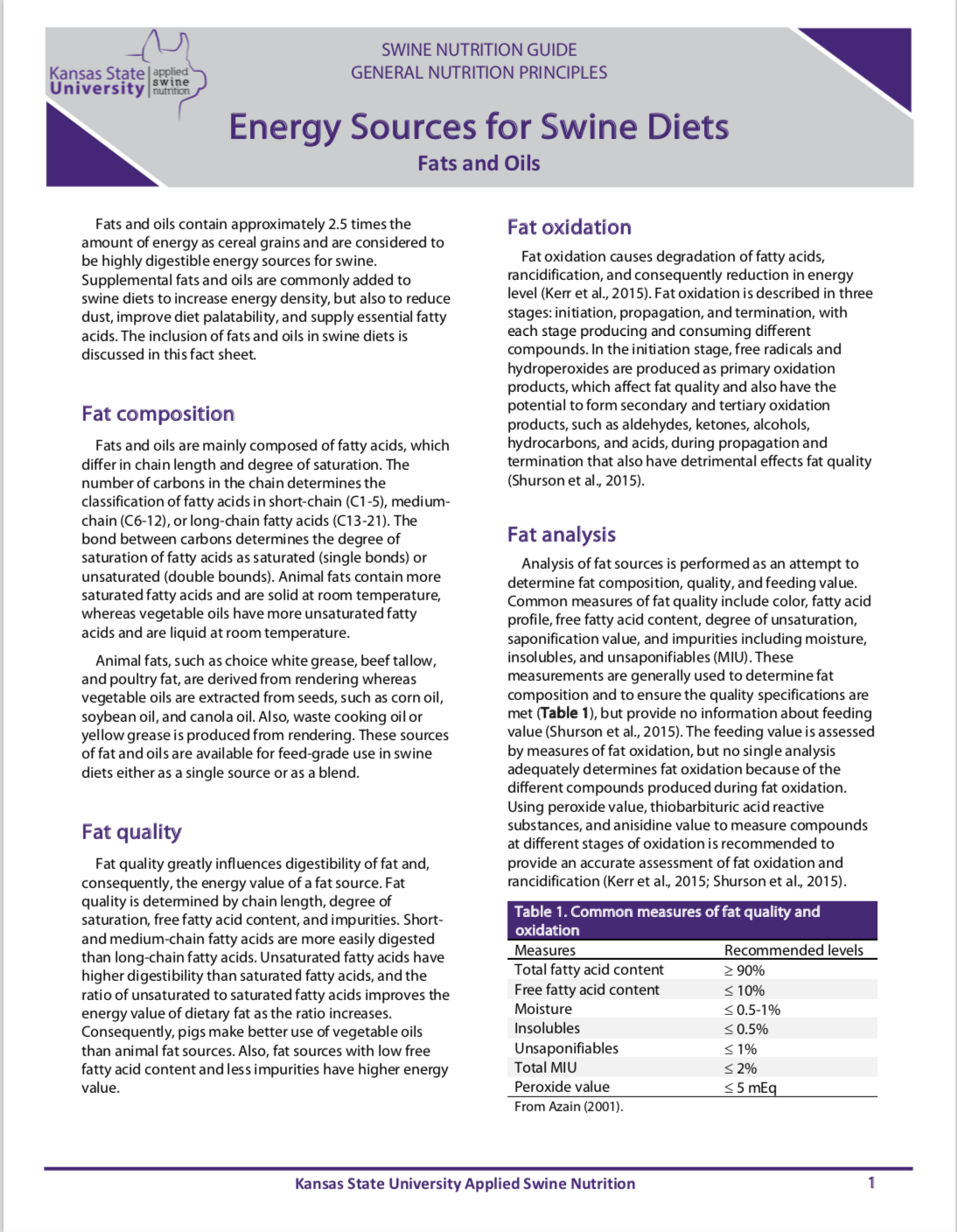Energy digestibility
Energy is expressed as digestible (DE), metabolizable (ME), or net energy (NE) by considering the loss of energy during digestion and metabolism from gross energy (GE) in the feed, as follows:
- Gross energy (GE): the amount of energy in the feed.
- Digestible energy (DE): the amount of energy in the feed minus the amount of energy lost in the feces.
- Metabolizable energy (ME): the amount of energy in the feed minus the energy lost in the feces and urine.
- Net energy (NE): the amount of energy in the feed minus the energy lost in the feces, urine, and in heat production through digestive and metabolic processes, i.e. heat increment.
The energy systems are used to characterize the energy concentration in feed ingredients and to provide a common basis in diet formulation. The DE and ME systems have been the most widely used for evaluating ingredients and diets because energy values are relatively easy to measure and are assumed to be additive in mixed diets. However, the DE and ME systems usually underestimate energy values for ingredients high in fat and starch and overestimate energy values for ingredients high in protein and fiber, because these nutrients result in different quantities of heat increment. The NE system is recognized as the closest estimate of the energy values of ingredients and diets because it takes the heat increment from digestive process and metabolism of feeds into account. However, the NE system is dependent on environmental conditions, variation among pigs, and growth stage, as those factors influence the energy requirement for maintenance and the ability of pigs to digest and utilize nutrients.

